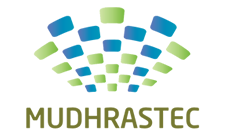
Technical Service & Facilities Management
A Technical Service & Facilities Management ERP (Enterprise Resource Planning) system integrates various processes involved in managing technical services and facilities to improve efficiency, streamline operations, and support strategic decision-making. This system combines features of facilities management, maintenance management, service management, and resource planning to provide a comprehensive solution for organizations. leading to increased operational efficiency, cost savings, and improved service quality.

Key Components and Features
1. Work Order and Service Request Management:
Service Requests: Allow users to submit requests for technical services or facility maintenance.
Work Order Automation: Automatically generate and assign work orders based on service requests.
Real-time Tracking: Track the status of work orders from initiation to completion.
Preventive and Predictive Maintenance:
Maintenance Scheduling: Plan and schedule routine maintenance activities to minimize downtime.
Condition Monitoring: Use IoT sensors and data analytics to predict equipment failures and plan maintenance.
Maintenance History: Maintain records of past maintenance activities for analysis and planning.
Asset and Equipment Management:
Asset Registry: Keep a detailed inventory of all assets and equipment, including technical specifications and maintenance history.
Lifecycle Management: Manage assets throughout their lifecycle, from procurement to disposal.
Asset Performance Monitoring: Track asset performance metrics to identify inefficiencies and areas for improvement.
Resource and Workforce Management:
Staff Scheduling: Optimize workforce allocation for maintenance and service tasks.
Skills Management: Maintain a database of staff skills and certifications to ensure appropriate task assignments.
Resource Planning: Forecast resource needs and allocate them efficiently.

Inventory and Procurement Management:
Spare Parts Management: Track inventory levels of spare parts and consumables to prevent stockouts.
Supplier Management: Manage vendor relationships and track supplier performance.
Procurement Automation: Automate procurement processes for efficiency and cost savings.
Customer Relationship Management (CRM):
Customer Interaction Tracking: Record and track customer interactions and feedback.
Service Level Agreements (SLAs): Manage SLAs to ensure service quality and customer satisfaction.
Customer Reporting: Provide transparent reporting to customers regarding service status and performance.
Reporting and Analytics:
Dashboard Views: Offer real-time data visualisation to facilitate prompt decision-making and insights.
KPI Monitoring: Track key performance indicators related to service efficiency, asset utilization, and cost management.
Custom Reports: Create reports that are specific to certain stakeholders.
Integration and Scalability:
System Integration: Seamlessly integrate with existing enterprise systems such as ERP, CRM, and HR.
Cloud and Mobile Access: Leverage cloud technology for remote access and scalability, and provide mobile access for field personnel.
